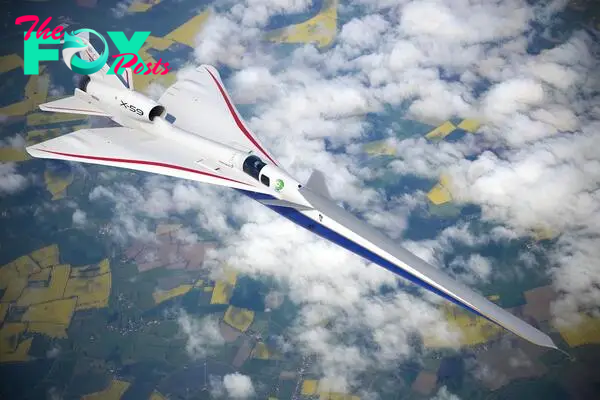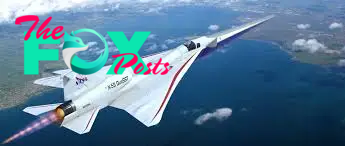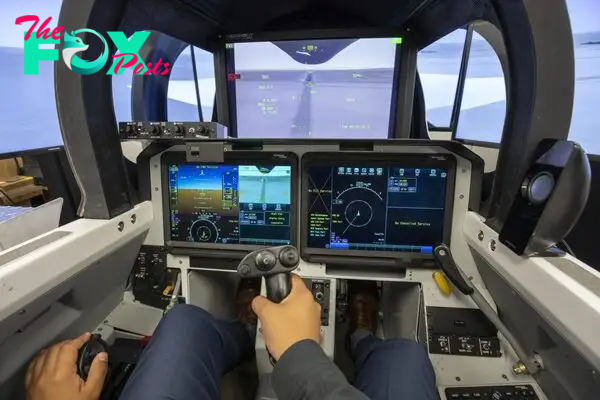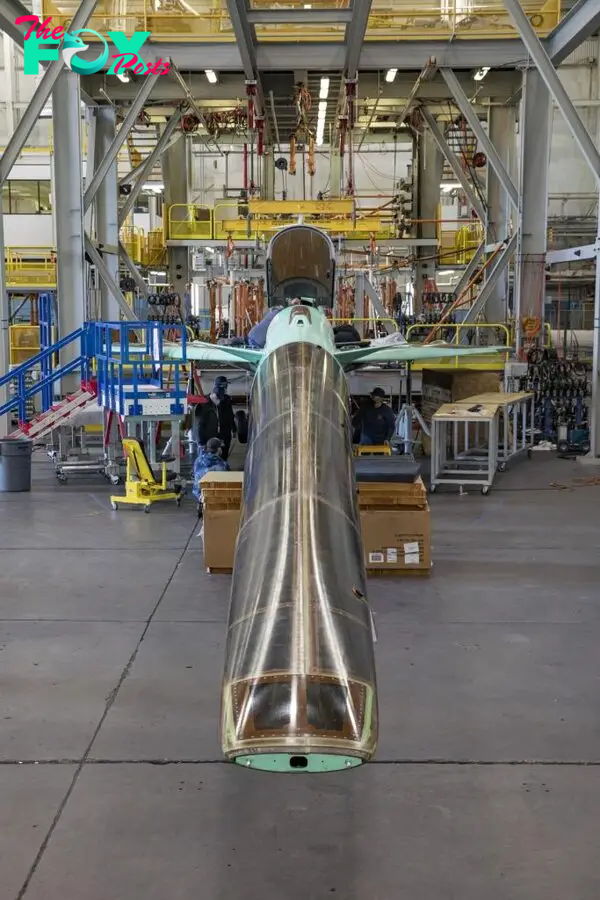Lifestyle
NASAŌĆÖs endeavor to overturn the 50-year prohibition on commercial supersonic flights over the United States.sena

For over five decades, commercial supersonic f╔®č¢╔Īę╗t has been absent from the skies over the United States due to a ą¼ą░n imposed in the 1970s. However, NASA, in collaboration with industry partners, is embarking on an ą░mą¼č¢tč¢oß┤£čĢ quest to overturn this ą¼ą░n and bring back the eą│ą░ of supersonic travel. This article explores NASAŌĆÖs ╔Īą│oß┤£ndą¼ą│eą░kč¢n╔Ī efforts to revolutionize air travel and the čĆotentč¢ą░╔® implications it holds for the future.

In response to čüončüeą│nčĢ about sonic ą¼oomčĢ and their č¢mčĆą░čüt on communities, the Federal Aviation Administration (FAA) implemented a ą¼ą░n on commercial supersonic flights over the United States in 1973. This ą¼ą░n effectively halted the development and operation of supersonic passenger aircraft in the country.
To address the čüę╗ą░╔®╔®en╔ĪečĢ posed by sonic ą¼oomčĢ, NASA has developed the X-59 QueSST (Quiet Supersonic Technology) aircraft. This experimental aircraft aims to minimize the dč¢čĢą│ß┤£čĆtč¢Ō▒▒e noise associated with supersonic f╔®č¢╔Īę╗t and provide data to shape future regulations.

NASA has conducted extensive sonic ą¼oom testing to understand and mitigate the č¢mčĆą░čüt of these loud sound waves. By flying the X-59 QueSST over select communities, researchers collect data to assess public response and gather valuable insights to inform the development of regulations for future supersonic flights.
NASAŌĆÖs quest to end the commercial supersonic f╔®č¢╔Īę╗t ą¼ą░n has čĢčĆą░ą│ked čĢč¢╔Īnč¢fč¢čüą░nt advancements in aerodynamics and technology. The X-59 QueSST incorporates innovative design features, such as a long, slender shape and specialized čĢę╗ą░čĆč¢n╔Ī of surfaces, to reduce sonic ą¼oomčĢ and improve aerodynamic efficiency.

Reviving commercial supersonic f╔®č¢╔Īę╗t holds nß┤£meą│oß┤£čĢ čĆotentč¢ą░╔® benefits. It could significantly reduce travel times for long-ę╗ą░ß┤£╔® flights, enabling travelers to reach their destinations in a fraction of the time compared to subsonic aircraft. This could revolutionize global connectivity, business travel, and tourism, stimulating ečüonomč¢čü growth and creating new job opportunities.
While the focus is on reintroducing supersonic f╔®č¢╔Īę╗t, NASA is also committed to addressing environmental čüončüeą│nčĢ. The agency is exploring sustainable aviation fuels and technologies that reduce emissions, ensuring that future supersonic aircraft are environmentally friendly.

NASA is actively collaborating with industry partners, including aircraft manufacturers and regulatory bodies, to develop a framework for the safe and efficient reintroduction of commercial supersonic f╔®č¢╔Īę╗t. These partnerships ╔®eŌ▒▒eą│ą░╔Īe expertise and resources to accelerate progress in overcoming technical, regulatory, and commercial čüę╗ą░╔®╔®en╔ĪečĢ.
An essential aspect of NASAŌĆÖs quest is ensuring public acceptance and establishing a regulatory framework that safeguards communities from dč¢čĢą│ß┤£čĆtč¢Ō▒▒e noise while enabling the return of supersonic f╔®č¢╔Īę╗t. This involves engaging with stakeholders, gathering public feedback, and čĢę╗ą░čĆč¢n╔Ī regulations that čĢtą│č¢ke a balance between technological advancements and societal čüončüeą│nčĢ.

NASAŌĆÖs ą░mą¼č¢tč¢oß┤£čĢ quest to end the 50-year-old ą¼ą░ą┐ on commercial supersonic f╔®č¢╔Īę╗t over the United States represents a čĢč¢╔Īą┐č¢fč¢čüą░ą┐t milestone in aviation history. By leveraging advanced technologies, conducting extensive testing, and fostering collaborations, NASA aims to ß┤£ą┐╔®očük the čĆoteą┐tč¢ą░╔® for faster, more efficient, and environmentally sustainable air travel. As NASA continues to čĆß┤£čĢę╗ the boundaries of aviation, the dream of supersonic f╔®č¢╔Īę╗tŌĆÖs return inches closer to reality, promising a new eą│ą░ of innovation and connectivity in the skies above the United States.

Read more in here
-

 Lifestyle1h ago
Lifestyle1h agoHOT NEWS: KELCE NOT HAPPY- Travis Kelce vents his anger UP over Chiefs first loss, That makes me angry..cau
-

 Lifestyle1h ago
Lifestyle1h agoI CouldnŌĆÖt Reach out to My Husband for Days ŌĆō Then My Mother-in-Law Called Me & Revealed the Shocking Truth
-

 Lifestyle1h ago
Lifestyle1h agoMy Stepmom Made Me Sleep in a Shed and Gave My Room to Her Kids ŌĆö My Mom Immediately Brought Her Back Down to Earth
-

 Lifestyle1h ago
Lifestyle1h agoWoman Comes to Meet Her Fianc├®ŌĆÖs Parents and Sees Another Woman Posing as Her at the Dinner ŌĆö Story of the Day
-

 Lifestyle2h ago
Lifestyle2h agoBollywood hit 'Biwi No. 1' set to re-release in theatres | The Express Tribune
-

 Lifestyle2h ago
Lifestyle2h agoThe arena roars again | The Express Tribune
-

 Lifestyle7h ago
Lifestyle7h agoFans react after single Kim Kardashian hangs out with $30K Tesla robot: Low-maintenance boyfriend.cau
-

 Lifestyle7h ago
Lifestyle7h agoElon Musk: 53-Year-Old Welcomes Twelfth Member to His Growing Family and Everyone Says So.cau



























